
It’s been two years since CPKC CEO Keith Creel drove the ceremonial final spike at Knoche Yard in Kansas City to celebrate the merger of Canadian Pacific and Kansas City Southern. The symbolic event marked what rail executives, regulators, and analysts all expected would be the last merger involving two Class I railroads.
But now there are whispers across the railroad industry that some of the big systems are dusting off their merger playbooks and evaluating their options. Mergers, independent analyst Anthony B. Hatch says, are a hot topic in Class I boardrooms, second only to talk about the potential impact of tariffs.
Why the change of heart?
Until the pandemic hit in early 2020, there had been expectations that the big U.S. systems would pivot to growth after several years of cost-cutting, shedding lower-margin traffic, and streamlining operations, Hatch says.
Then came wild gyrations in freight demand, widespread crew shortages and related service problems, a particularly contentious round of labor negotiations, and a harsh spotlight on safety after the East Palestine, Ohio, hazardous materials derailment – which was then followed by activist investors and trade wars.
The result: 2024 North American rail volume was 4.4% below 2019, and CSX has been the only railroad to see its traffic return to pre-pandemic levels.
“We haven’t seen any growth – any growth in market share, any growth in volumes, any growth in market capitalization,” Hatch says. Some see a U.S. transcontinental merger as a way to jumpstart volume and earnings growth.
Changes in Washington also have played a role in sparking internal railroad debates about mergers. With the Trump administration aiming to roll back federal regulations, and a Republican chairman at the Surface Transportation Board, some believe the conditions may be right for a final round of industry consolidation. And then there’s the fact, Hatch points out, that only one of the current six Class I chief executives has long-term ties to the railroad they lead.
The Class I railroads regularly analyze the merger landscape and produce internal studies that cover potential merger partners and scenarios. What’s different now, according to Hatch and multiple other people in the industry, is that at least three railroads’ boards are being asked to weigh in. Plus, at least two of the Class I railroads have beefed up their legal and lobbying teams in Washington.
Publicly, the Class I railroads are split over whether mergers make sense or are even possible given the tighter merger rules the STB adopted in 2001. The new rule said mergers must enhance competition, rather than merely preserve it, and would have to be in the public interest. (A deal involving a Class I and KCS was given an exemption under the new rules, although the board still had the right to judge a KCS combination under its 2001 rules.)

Railroads would become more competitive with trucks if it didn’t take 24 to 36 hours to hand off freight cars in Chicago. “You change the whole paradigm discussion with trucks on the highway versus what comes to the railroad,” Vena said in an interview last month.
The ability to provide fluid, single-line service from coast to coast – like Canadian National and CPKC can north of the border, and in CPKC’s case deep into Mexico – would help U.S. exporters and importers better compete globally, Vena contends.
“I think it’s a win for our customers and a win for competition and it’s a win for how the country should move ahead,” Vena says. “Now, on the regulatory front, it’s complicated.”
But a Class I merger proposal could gain STB approval when the timing is right, Vena contends. “I’ve always thought that it was possible,” he says. “Now whether we’re in the right situation with everything – who knows and we’ll see what happens.”
CN CEO Tracy Robinson, speaking on the railway’s May 1 earnings call, said consolidation has been a topic of conversation during her entire career in the industry. “There seems to be a little bit more chatter right now, but at the same time the risks of these types of combinations are significant,” she said. “The new rules that came in in 2001 set a pretty high bar.”
CN sought to get its ill-fated KCS acquisition judged under the new rules. But CN didn’t get past go, as the STB shot down its request to put KCS in a voting trust, a common maneuver for rail mergers.
Robinson says CN prefers to focus on forming interline agreements with other railroads, such as the Falcon Premium intermodal service that links Canada and Detroit with points in Mexico via Union Pacific and Ferromex, or service to the Ohio Valley with Norfolk Southern and CSX.
Joint service can provide some of the potential benefits of mergers – but without the significant financial and regulatory risks, she says.

BNSF Railway doesn’t see a catalyst for a merger.
“For a merger to happen in today’s environment, our customers, policymakers, and the communities we serve would need to indicate that they want to see additional mergers,” BNSF spokesman Zak Andersen says. “We view it as unlikely as we aren’t hearing from our customers or the other constituencies that they want to see further consolidation in the industry at this point in time.”
CSX and Norfolk Southern – which likely would be targets in any Class I merger scenario – declined to comment about industry consolidation. CPKC’s Creel, meanwhile, has said multiple times that the CP-KCS merger would be the last ever.
The STB declined to comment about transcontinental mergers. But former board chairman Martin J. Oberman, who retired last year, says the STB would take a careful, data-driven approach to a review of any Class I merger application.
“It would be irresponsible for me to say that some hypothetical merger could or could not overcome the new rules,” Oberman says. “All you could say is it’s a much higher hurdle.”
The 2001 rules were designed to put the brakes on megamergers following a rapid round of consolidation over the prior two decades. Two of those mergers – UP’s acquisition of Southern Pacific and the NS-CSX split of Conrail – produced mega-meltdowns due to initial trouble integrating the railroads.
“And of course then you have to impose on that 25 years of experience and a vastly changed economy,” Oberman says.
Oberman says two broad policy considerations would shape his thinking during a Class I merger review. First, each of the six Class I’s take their own approach to running a railroad, and the benefits of that diversity would be lost through further consolidation. Second, how big is too big? Today’s railroads are already gigantic, and Oberman wonders whether transcontinental mergers would be in the public interest.
There’s no question, industry observers say, that carload and bulk shippers would equate another Class I merger with World War III. Merging railroads would have to contemplate broadened access – in the form of trackage rights or reciprocal switching – for shippers who are served by just one railroad or would lose access to two.
The STB has broad latitude to impose conditions on any merger, which is a wildcard that could lead to some form of open access beyond what the railroads might imagine. Hatch contends that would wipe out any economic benefits from an end-to-end merger of Class I systems.
Vena disagrees. “I’m all about competition and I don’t have a real problem with it. If somebody wants to compete against Union Pacific in that environment, I’m good with that,” he says.
Oliver Wyman consultant Adriene Bailey, in a RailTrends presentation in November, argued that if current Class I volume growth efforts don’t bear fruit, railroads will either have to turn to transcontinental mergers or try to shrink themselves to prosperity.
Eventually, a lack of growth will put pressure on railroad CEOs to boost earnings, she says.
“What are our options if rail fails to grow? Oliver Wyman sees two remaining choices,” Bailey said. “The first would be that the four largest Class I railroads merge into two transcontinental systems like Canada. The second would be for the Class I’s to shrink to greatness and share a lot more infrastructure.”
Creating two U.S. transcontinental systems would eliminate redundant headquarters costs, significantly expand the single-line service that shippers prefer, and open up so-called watershed markets, Bailey says. The watershed isn’t served well today because origins and destinations within a couple hundred miles of the Mississippi River are short hauls that are not attractive to the eastern or western railroads.
“Mergers may reduce some competitive options for shippers, but railroads will have a vested interest in keeping the volume from going back to trucks,” Bailey says.






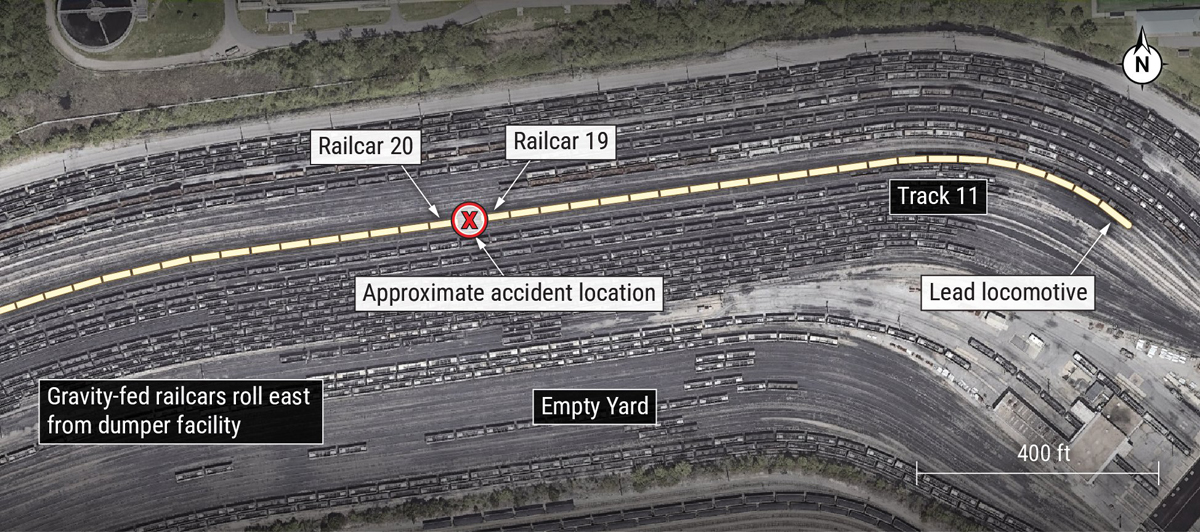
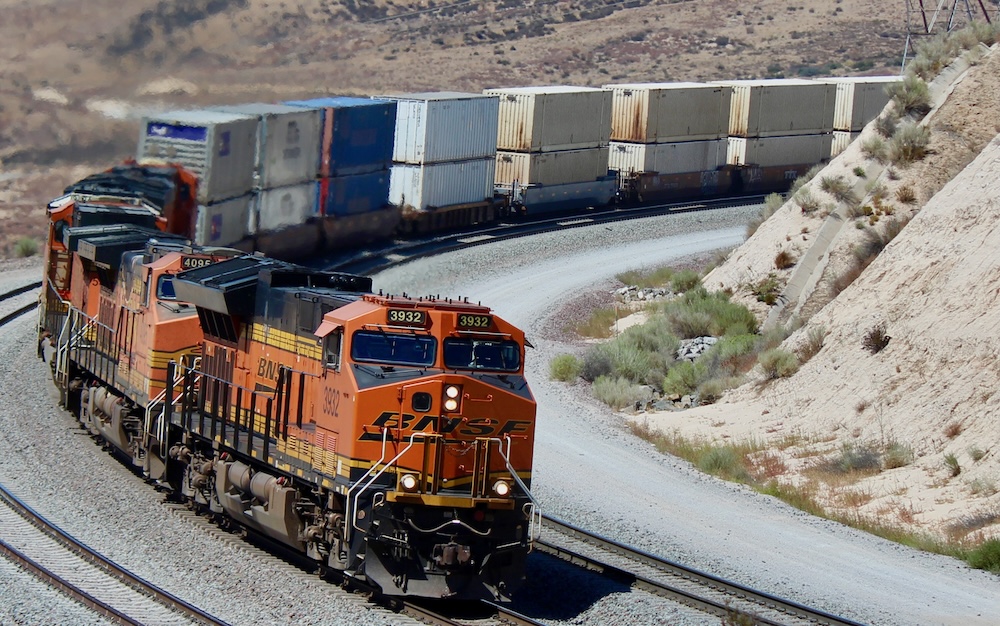
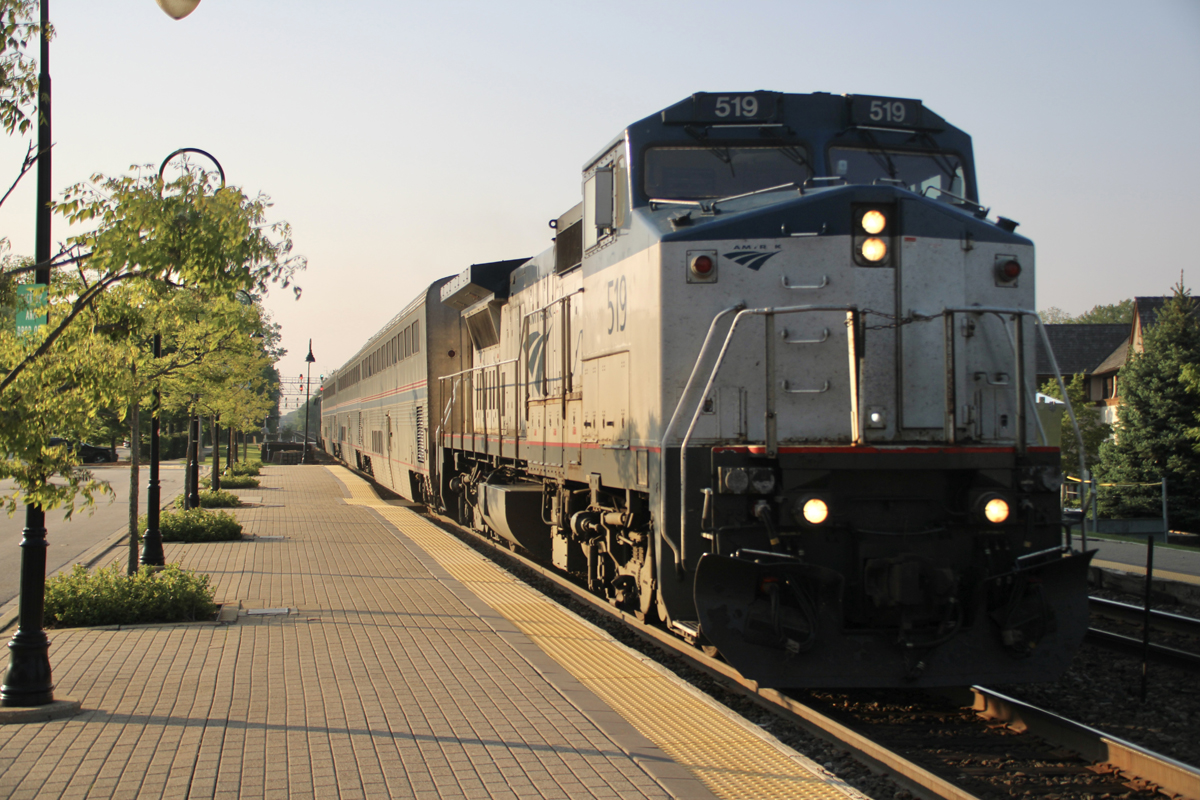
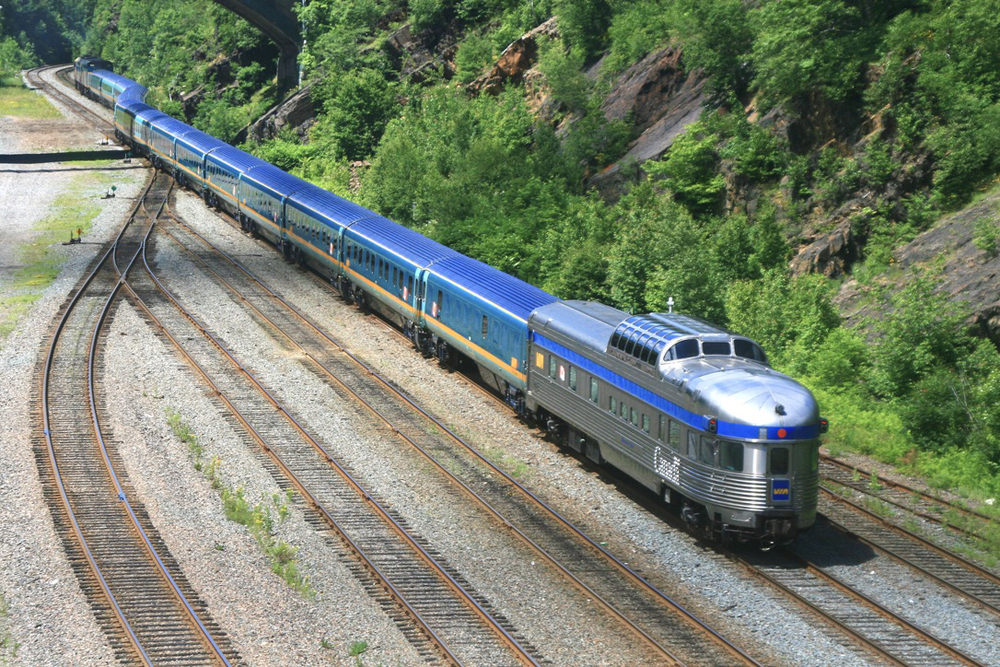
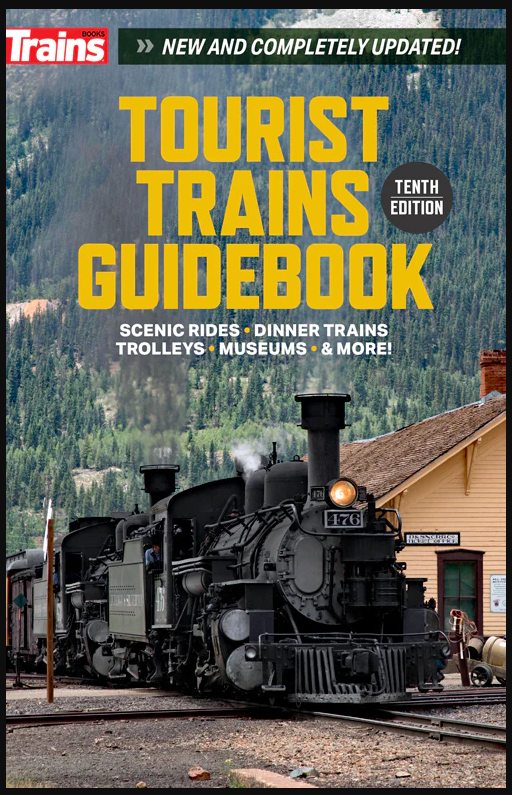
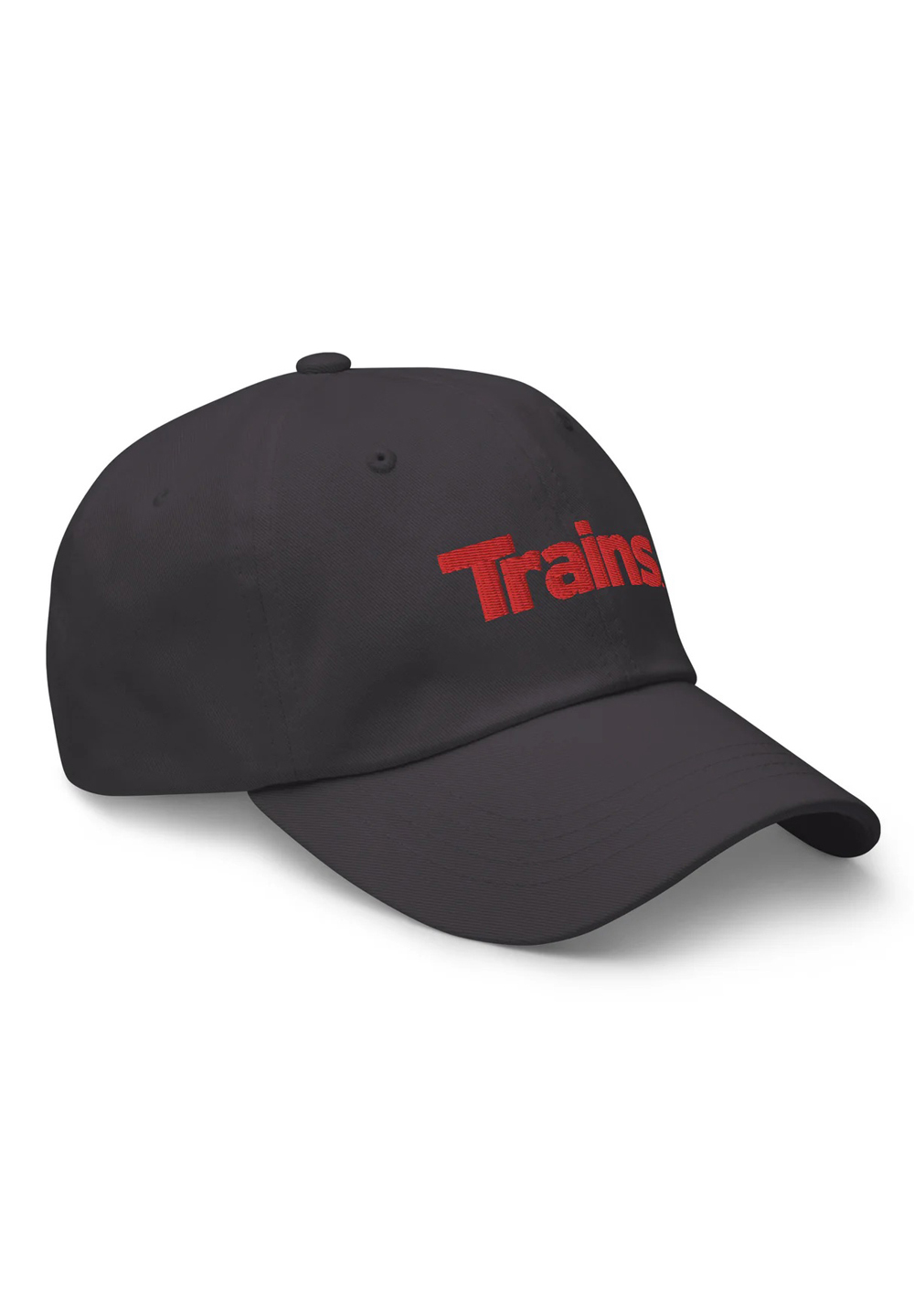
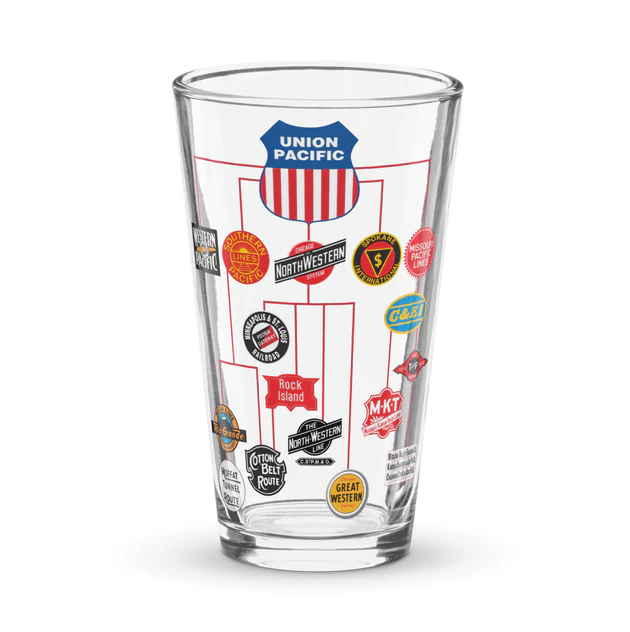
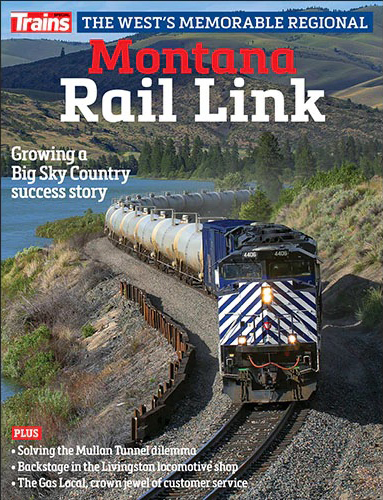
I frankly can’t see any difference between now with four US RRs and a potential of just two US RRs. There really wouldn’t be any reduction in competition. The mergers would be end to end. And would allow a shipper like say GM to go coast to coast with just one company. Makes sense to me.
Every merger proposal always says it is going to make us more truck competitive, or it’s going to convert “XXXXXX” number of trucks to rail. With all of those promises of the past, one would think it would be hard to find a truck on our interstates today. Sadly, the only thing that will improve with another merger is someone’s bank account. The majority of shippers will still get their customary lousy Class One “service.”
“The second would be for the Class I’s to shrink to greatness and share a lot more infrastructure.”
That is a non starter. The only way there will be shared assets is through a transcontinental merger (shared by default) or if the government nationalizes the railroads and has one rail system upon which all trains (of USRAIL) could go. but the chances of that happening are two: Slim and none and slim has already left the building…
The only way to equalize trucks and trains is for trucks to have the same taxes put on them that railroads have, not just use taxes which they already pay but property taxes which railroads pay and trucks don’t. The roads have all been built for trucks and airports for planes but the railroads have had to do the whole banana by themselves and keep it up to boot. It will never be equal competition between the two until that issues can be equalized and I don’t see it happening anytime soon. Nor do I see a coast to coast merger either. Politics would be heavily against it…
Great reporting, Bill, but the whole pretense here makes me vomit – just a little. For one, a simple brush-up on merger history will tell the shills that mergers are NOT what promotes traffic growth.
Mr. Vena’s comments sound like raising the white flag to me. Everyone inas, since doctrinated in the “Hunter Way” was convinced that cut-cut-cutting to the bare bones would make the world a better place. Nope. Wall Street got richer. Great. Now what? And nobody seems to have the guts to remind Wall Street that railroading has, for only 200 years now, been a capital-intensive industry that is perfect for anyone looking for steady growth and dividends.
Question for any railroad CEO: the 20th century’s legendary leaders and caretakers of the rail industry – think Cassatt, Atterbury, Kenefick, Brosnan, Haverty, and many more managed to keep Wall Street in check while actually investing in solutions, people and service that GREW business. What is the disconnect today? Why can’t you manage expectations?
For far too long, customers have used rail because they have to. Not because they WANT to. That is your problem, and shaving a day off transit through Chicago won’t solve a darned thing. It seems no one at the helm of these companies, which have SO much incredible history and impact on our culture and growth of our nation, give a crap about the rail industry. It’s losing its soul. Or maybe it’s lost altogether, too late. The growth mindset existed not too long ago. Yet, every form of transport has dealt with a pandemic, now tariffs – just a lot of drama. What really shot the railroads in the foot was taking PSR too far and putting Wall Street above the customer. Transcontinental mergers will create a lot of golden parachutes. But they won’t solve the ills of a mindset like what this excellent article describes. Wake up, get creative, give customers a reason to GIVE you freight. Otherwise, autonomous trucks will be eating the lunch of two U.S. railroads instead of four. Nobody wants that.
The names you mentioned didn’t have to face today’s hedge funds.
Another trip down memory lane…the C&O and others by-passed Chicago with car ferries across Lake Michigan, especially to Manitowoc and Kewaunee, whereupon the Green Bay & Western (aka “The Green Bay Route”) took the traffic West to the Mississippi, interchanging with the CNW, Burlington, and Milwaukee, crossing over the CNW’s bridge to Winona. There was also a branch line down to Grand Crossing at LaCrosse. To this day you can cross the lake on the SS Badger, sans freight cars.
Don’t forget the Chief Wawatam, across the Straits of Mackinac, carrying freight cars between Michigan’s two peninsulas. Possibly the most labor-intensive, lightly-trafficked car ferry anywhere.
The best Chicago interchange solution I’ve ever heard of (or seen in action) is the one where J.B. Hunt takes the container off the train at Corwith and then trucks the box to Cleveland, Columbus or Cincinnati. No fuss, no mess and works like a charm just about every time.
Although I do give CSX some credit for being smart enough to recycle the White Elephant at North Baltimore and move the Chicago interchange a few hundred miles to the east.
Mr. Landy this transaction works so well because it’s the trucker that controls all the drop-offs and pick-ups at N.B. (it’s called load matching, and the truckers are VERY good at it unlike the railroaders). Remington was a free-for-all with no one in control of anything.
The rest of this discourse seems to me like so much bloviating.
Just remember that if you’ve got it a truck brought it even if did move on a train.
With all the stock buybacks they could be resold to make the TP&W 2 main tracks/ That investment would add to the asset balance of the RRs involved/ The potential to reduce the OR would be evident. Anyone ever calculated the OR cost of using the CHI mess VS not having to use it?
Another great article Bill, and thought provoking. I find it remarkable that again railroads say mergers are the answer. Well, since the boom merger era in the 1980s and 1990s, the answer was always more mergers. Now we’ve merged down to six systems, and again the same argument comes up. Well, fine. But when you get down to two railroads, what’s your answer then? You can’t use the merger argument anymore. Maybe the railroads would then be forced to provide better service, go back to markets they have long ignored, and pursue innovative strategies. But based on past experience, I doubt that will happen. I fear the next step after the final mergers would be a cry to cut costs by abandoning lines and general downsizing. Frankly, without changes in philosophy and somehow getting Wall Street out (which is probably impossible) I don’t see Class One railroading having a very bright future.
The best way I can think of to lessen Wall Street’s control of the Class 1 railways is a Federal law that prohibits them from buying back their own stock, or at least require STB advance approval of it. Actually, that could be applied to all major corporations to help control the Hedge Funds.
That will take some courage from both political parties so I wouldn’t bet on it ever happening.
A common question here is “Why Chicago?”
Because all lines can interchange there. East to West, North to South.
Technically, St Louis is a close second to having all lines interchange there, but it is not the most optimal for all those involved.
Class 1’s technically should be able to interchange anywhere, but they choose not to because it is more efficient to simply use one (or the few). Common exchange rates, single set of personel, a third party facilitator.
Too many examples to list of typical Class 1 responses, but just looking at UP for a second, they much prefer to transfer to CSX at Chicago than St Louis, even though St Louis (now that the MacArthur Bridge is fixed) technically should offer more fluid through traffic in each direction. But many shippers have noticed that UP would rather route east bound traffic for the southeast via Chicago. CSX prefers it that way too as they like to gather all of there SE bound traffic and bring it down from UP via Chicago.
It simply points to the fact that Class 1’s are very lazy and don’t do a great job of optimizing their routing. By allowing any of them to merge just simply perpetuates the laziness. In their mind, exchange is a cost, so the only way to minimize the cost is use less of it or eliminate it,.
excellent response John. I would hope TRAINS will give us alternative ideas for growth, not what senior management thinks will bring the best stock price. Grow your basic business is the path for success. Or as Dunking’ Doughnuts used to advertise: “Got to make the donuts.” Indeed, more donuts is what we need. Cheers.
If the old TP&W was made a rapid thru route fully 2 main tracks then much of the CHI transfer problem would be solved. Why are the RRs involved so set against using this shorter and much quicker routing?
ATSF owned the TP&W for this very reason, to exchange with east coast railroads at Logansport to avoid Chicago congestion. It failed, why?
No east coast railroad wanted to exchange with ATSF there, they insisted that everything switch at Chicago, even though the Logansport route was a few miles less and definitely less congested.
The failed attempt by Great Plains RR to build a greater Chicago rail bypass failed becuase no one, repeat, no one would use them (and they werent well funded). Why have yet another third party transfer when I ready have one in Chicago?
In addition ATSF wanted to open an intermodal lift at Remington, Indiana …. i.e. for Detroit and Ohio traffic. Never succeeded (if it happened at all). Instead TPW was dumped onto a short line and BNSF ends in Chicago,
No, I don’t have any inside info, never worked in railroading (or trucking). All my info is stuff I remembered reading in TRAINS MAG — way back when the memory chips in my cranium still functioned.
@Charles: Yes the State of Indiana funded and built a special ramp at Remington for intermodal lift. It is still there and used by a fertilizer company to store hoppers.
may be that these possible mega mergers will be approved to enable the ultra rich to line their pockets more. Have to agree to most of the below posts.
Being a TRAINS reader (1965-present) witnessing as it were the multiple mergers that have occured, let’s keep the “Big Four” (BNSF, CSX, NS, and UP), our Canadian allies (CP and CN), and the regionals. We don’t need nor want any more drama within the industry. Surely we work out our issues and work together to further the future of this great industry.
Take a look at an old Milw. Rd. system map and you will see a line extending East well into central Indiana past Bedford, interchanging with most Eastern roads enroute, basically bypassing Chicago. And remember the “Peoria Gateway”?
Well, I remember the Kankakee Belt, and for what it was worth (not much, according to a discussion years ago on these pages) the Michigan Central bypassing Chicago to the south.
Point is, each Class One forwards traffic to each other Class One. So if UP merges with CSX and CPKC, and if BNSF merges with NS and CNR, each railroad still needs to figure out how to interchange with the other. So what is solved with another round of mergers? Nothing.
Question for Union Pacific, if UP meets CSX and Norfolk Southern in Chicago, St. Louis, Memphis. How will a new meg-merger help?
Trains had an excellent special issue on Chicago. If Chicago is the problem, then build “around” Chicago with your own money, not tax money funded.
The railroads can’t afford it which is why it has never happened. They don’t get tax money like the trucking industry does…
I have an idea! Let’s consolidate them all into ONE railroad that acts more like a public utility! We can call it RailCon!
You do a merger you are playing with fire. The Marxist teamsters will be against it so will the Surface Transportation Board and they will kill the merger before it is even done. We seen what mergers did to other railroads Rock Island gone, Florida East Coast reduced to a class 2, Conrail drawn and quartered, Pan Am bought out by CSX, Rio Grande and Southern Pacific forced into bankruptcy over 100 years because of the Wilson Interstate Commerce Commission which the Surface Transportation board replaced, Kansas City Southern gobbled up in the last merger, A2A never built forcing the bankruptcy by politicians, Alaska Railroad headed into receivership if Trump does nothing, Illinois Central gobbled up by the CN, and the list goes on. You get involved in a merger you are going to liquidate your company we seen what happened with The Rock we do not want to have it again.
To add to my earlier post, I agree with Tracy Robinson, CEO of CN. Interline agreements are the way to go not mergers of different railroad each with their own culture.
Eric Lehmuth is spot on with his comments on lousy service. In this current society more than ever, service and reliability are King. That is why shortlines grow business but unfortunately they eventually have to hand off to a class 1.
I will always oppose mergers as I stated earlier. I good example in the Seattle area of a merger gone wrong, actually more like a buyout. Rite Aide, which just filed a second bankruptcy bought Bartells Drugs about 4 years ago. Bartells had been a family business for 130 years. I had a neighbor who was working on marrying the two computer systems of each drug store and said was tough as different cultures. Many Bartells have been closed and all remaining stores will be either sold or closed including all Rite Aide stores. Rite Aide is history.
Remember, mergers never benefit customers or employees, only CEO’s and stockholders.
How many businesses are started or expand without stockholders?
Only the ones with very deep pockets…
that’s to hard to predict
Conrail and BNSF ran a train (TVLA, I think) and handed it off somewhere in Illinois, bypassing Chicago. Why would it be so hard to recreate this service? Railroad “management” – one of my favorite oxymorons – is why.
Mr. Vincent when I started with the Santa Fe in 1990 we were advertising a train called the QNYLA with a schedule of 76 hours, NYC to Los Angeles.
This train was the direct descendent of a train called the “Super C” which operated from Chicago to LA on the same 39.5-hour schedule as the legendry Super Chief passenger train. The man behind this train was named John Shedd Reed.
We already have several very good nationwide trucking companies who have figured out how to do business with the dumb stupid railroaders most of the time. And somehow, I do not think that Hunt or Schnieder take 3-4 days for a Chicago crosstown, more like a few hours vs. a few days.
UPS has tried several times to get a transcon in place from NYC to LA for express parcel and the 2 railroads made it so painful that they never try again. Why?
Becuase it requires the host railroads to exact a degree of discipline across their network. They have to notify all of their yard managers about an express passthrough and to keep the mainline from getting fouled by a slow moving coal drag or grain hopper megacar consist.
The district managers don’t like it becuase they want to route their trains the way they route their trains. Getting directives from above to clear their line is considered intrusive and from their perspective causes more trouble with avoiding line interference and therefore cost more money by making the line less fluid.
So from the railroad perspective, its more trouble than its worth, so they price it in the ridiculous zone to make up for the disruptions to other traffic. And it keeps shippers like UPS from trying to do it again.
Perhaps they should be looking at improving their service, instead of making things even MORE complicated. It might work.
You’re right about more lines avoiding Chicago, but there are plenty of those. St. Louis, Memphis, Kansas City, New Orleans all come to mind right away.
Personally I’d like to see the railroads go the opposite directions. With a few exceptions, I’d like to see the railroads break down to what they were in say 1978.
At the 1999 NPRHA convention in St. Paul, former BN CEO Norman Lorentzen was the guest speaker. He was asked if in the 70’s was there talk of the mega mergers of today. He responded that it was talked about but never acted upon because such mergers would be too big to manage. I remember a BN division superintendent talking to a conductor when I was riding Amtrak then. The supt and conductor both agreed at the time that BN was too big. I feel all of the abovementioned people were right.
Good post (as always) Michael. I agree with you.
So true Mr. Lehmuth, last gasps of a dying (suicidal) industry! The next step will be the Govt having to piece the carcass together when the moneyed pick it clean, that’s if there is still a functioning government by then.
I have said and observed many times, bigger is never better. I have never seen consolidations benefit either the customer or employees in my lifetime.
How frequently are either customers or employees a consideration in decision making for American businesses?
Railroads losing market share are a direct result of their own apathy and lack of actually wanting to gain business. I’ve seen it countless times in my career. They tell the public they’re customer oriented but they’re not by any means, they want to be monopolies on certain captive commodities and rake the shippers over the coals who have no choice but to ship by the railroads. If anyone on here called a major class one railroad and asked for a quote on let’s say a handful cars a year they’d tell you to go f@#k yourself yet they cry that their share of the freight pie is constantly shrinking…… Imagine that scenerio hundreds of times through the years and you get the picture. Short lines thankfully still want to railroad but many are at the mercy of a class one at some time.
The only railroads that are truly customer oriented are the short lines. And why? Because they have to! Their very existence rests upon the customer. The class ones used to all be that way. But then Wall Street and ROI and EBITDA got in the way and maximizing revenue became the goal and it was just assumed that the customers would come along for the ride. That is where Precision Schedule Railroading was thrust upon them and cost cutting to effect OR led everyone down the primrose path of rationalization, which started the dominoes to fall of crew and equipment shortages and everything else that had been negative about the railroads in the last two decades. Only when the railroads truly return to the idea that the customer is king will things ever change. Unfortunately, to most class one’s the customer is only represented by a dollar sign…
And the reason 24 to 36 hours to interchange.
Mergers? I don’t know. What’s needed is lines bypassing Chicago. What’s the point of an eastern and a western railroad merging if Chicago is where they meet?
If there is a good routing for rail traffic it doesn’t matter if it’s one company or two that run the train. Happens in aviation all the time. Delta or UAL or AA wants to sell you a ticket, not necessarily fly the airplane or merge with the company that does fly the airplane.
If UPRR and CSX (or BNSF and CN, etc.) can’t run a through train with all of today’s software and communications, a merger won’t help.
As for eliminating duplicated HQ staff, that’s an illusion. You still need a certain number of people to do the work.
Charles: never quite understood the airlines. The plane may say American on the outside but my ticket has two other companies listed. I once flew St. Louis to Frankfurt GE on TWA but flight was operated by Phillipine Air with caucasian crew. Maybe transcontinental railroads can operate without mergers. And yes, bigger is NOT better, just much more complicated and impersonal.
Two railroads? This is about monopoly market power. Deal, even when they fail, line the pockets of executives and banksters.